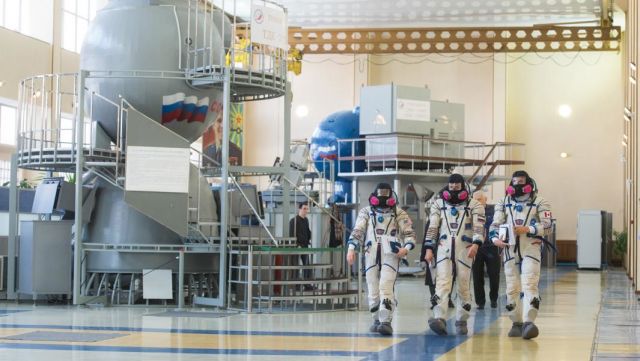The patent for such a simulator was received by the company " Center for training and training of personnel"
MOSCOW, December 19. /TASS/. The company "Center for Simulator Construction and Personnel Training" has received a patent for a simulator for astronauts, which will use an exoskeleton and augmented reality to simulate weightlessness to prepare for in-ship activities. This is stated in the patent distributed by the Federal Institute of Industrial Property.
"The invention relates to the section of manned cosmonautics and is intended to prepare the crews of international space stations (ISS) and transport spacecraft (TPC) for the so - called in-ship activities during simulation in terrestrial conditions of weightlessness in Earth orbit," the document says.
The patent specifies that the simulator should consist of an upper-limb exoskeleton, a helmet and virtual reality, gloves with tactile feedback, a computer system, a controller, a headset, a workplace and a set of medical sensors.
It is assumed that the cosmonaut, coming to training, will fix the exoskeleton on the shoulder belt and arms. Then it will be placed on the workplace in the position corresponding to the pose of working out a specific operation. Next, he connects a headset, gloves, cables, after which the astronaut generates a virtual interactive world-manned ships or an orbital station module.
During the training, the audio and video information received in the headphones and VR helmet will correspond to the operations performed, and with the help of feedback gloves, the astronaut will feel the impact on his fingers when he "presses" the virtual buttons. "At the same time, the exoskeleton of the upper extremities reduces the load on the muscles and joints of the hands, somewhat weighing and facilitating their movements," the document notes.
The presence of medical monitoring sensors "allows timely identification of psychophysiological conditions dangerous to the health of the trained cosmonaut and "recommend" the instructor to stop the training."

